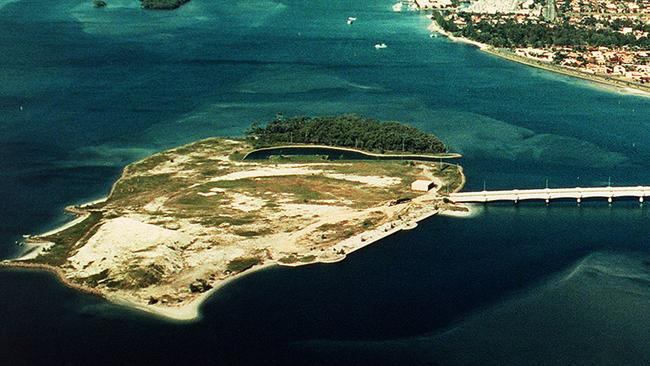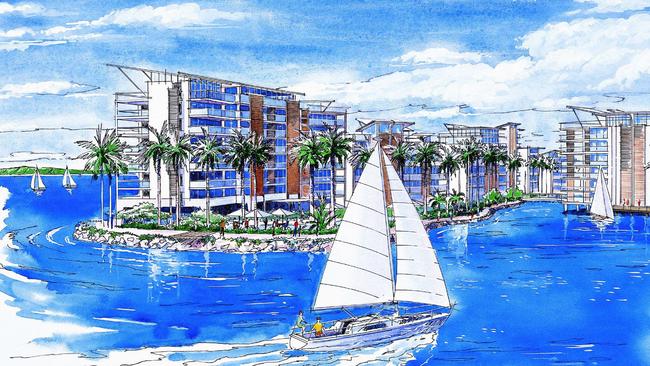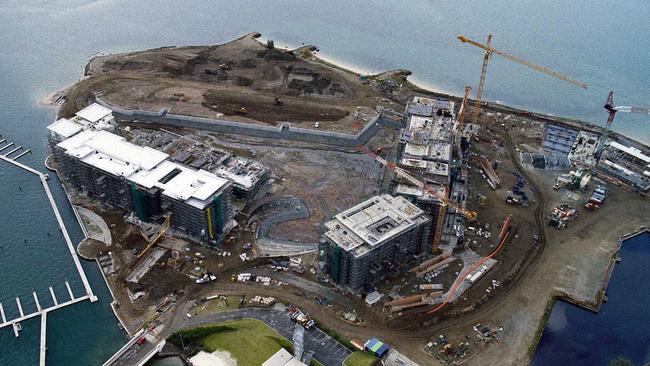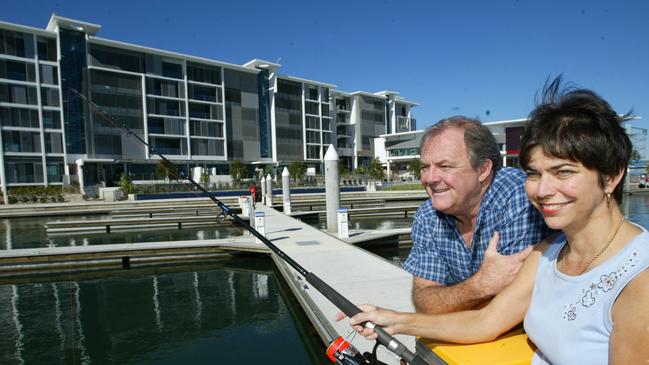Ephraim Island: True story behind Gold Coast’s exclusive island estate
Few Gold Coast housing estates are as exclusive as Ephraim Island. But things have hardly been smooth sailing and it cost people millions of dollars. This is what really happened.
Business
Don't miss out on the headlines from Business. Followed categories will be added to My News.
FEW Gold Coast housing estates are as exclusive as Ephraim Island.
Just south of the Sovereign Islands, its units and waterfront townhouses command prices of more than $1m each and, yet, few projects have been more troubled and delayed.
In 1972 the state government leased the island to Jays Pty, controlled by the Paradise Point-based Hansford Family for five years – for just $20 a year.
TRUTH ABOUT LIVING IN COAST’S MOST EXCLUSIVE SUBURB

REVEALED: HOW TRAMS MAKE YOUR PROPERTY MORE VALUABLE
The company was to fill the foreshores and provide $40,000 worth of accommodation or recreational facilities for tourists within the first two years.
However, nothing occurred.
By 1974 the island was transferred to the company for $1830.30.
In the mid-1980s the Gold Coast was in the midst of a major property boom and developers were snapping up land with grand plans for new projects.
Among them was Jim Raptis, who bought the island for nearly $8m from the Hansfords.

The sale of the 8ha island went through on August 7, 1987, and Mr Raptis would immediately unveil his proposal: a 400-bed hotel and 400 townhouses.
The Gold Coast City Council welcomed the proposal but insisted that a 420m bridge was needed to connect the island to the mainland.
Then-planning and development committee chairman Lex Bell said the bridge idea appeared acceptable.
“We have asked the developers to do a traffic study and put in a full application for a bridge,’’ he said at the time.

But much like the nearby Sovereign Islands project, Ephraim Island proved controversial, leading to a rally of more than 150 Paradise Point residents in January 1988.
They feared overdevelopment and that more land would be reclaimed from the Broadwater.
But this did not stop council approving the bridge, which was built in 1989.
Mr Raptis exited the project the same year, selling it to Japan-based resort development company Alpha for $43.5m.

Alpha announced it would rename the land Odyssey Island and build a $43m resort of lower density than the Raptis proposal and spent more than $15m on planning and earthworks.
The plan was to start work in mid-1991, two years before the first residents would move in. The complex was to include a hotel, tennis courts, marina and restaurant.
But these plans were derailed by the early 1990s recession and Alpha was ultimately forced to sell the site in 1996 for a loss of more than $50m.

Ephraim Island, nearly a decade after the first plans were unveiled, remained a sandy outpost connected by a closed traffic bridge.
It was snapped up the same year for just $10m by Bernard Lewis, of Lewis Land Group which controlled the Sovereign Islands, and immediately put it back on the market.
Numerous developers courted Mr Lewis to secure the site including a Hong Kong-Singapore consortium that offered $35m. It wanted to build a $500m resort called Port Solaire.
The deals all fell through and Mr Lewis held on to the island through the late 1990s, waiting until mid-2001 to finally show his hand.

In May that year he announced plans for a $500m resort with fellow developer Mirvac.
Mirvac Queensland chief executive Chris Freeman told the Bulletin in 2001 that Ephraim Island would become one of the city’s “jewels”.
“We are very confident that our plans for Ephraim Island will provide a truly world-class residential and resort option with national and international appeal, he said at the time.
Council approved the Lewis-Mirvac project in October 2002 and construction began in December that year.
The project was put to the market in early 2003, and the entire first stage sold for $130m.
Work lasted more than five years, with the first residents, Max and Maree Hume, moving into one of its towers in February 2005 after being appointed the site’s caretakers.

“We managed Arbour on Grey for two years and really enjoyed our dealings with Mirvac and all the residents,’’ Mr Hume said.
The Humes were the Island’s sole residents for more than three months before other residents arrived.
“It’s not lonely during the week because we’ve got about 500 workmen to keep us company,’’ Mr Hume said at the time.
“At weekends and at night, it’s just us and the security guards. You look around and think, `How good is this? We’ve got our own island!’”
By the late 2000s, Ephraim Island was established as an enclave for the wealthy.




